2015 marks the 500th anniversary of the death of the world’s most famous commercial printer, the Italian Aldus Manutius (1449-1515) who brought the Greek and Roman classics to the masses through the new technology of printing, introduced the world to italic type, and pioneered the pocket format book we now take for granted. Merchants of Print: from Venice to Manchester celebrates the legacy of Aldus as an innovative scholar-businessman who founded the Aldine Press in Venice at the end of the fifteenth century and sought to produce critical editions of the classical authors. It also examines how such a rich collection was amassed in a city more famous for its textiles than its texts, more associated with mills than libraries.
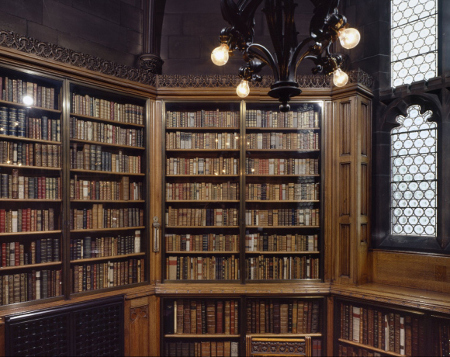
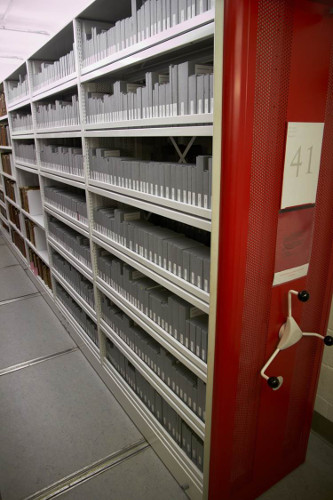
New storage, library extension 2007
The John Rylands Library has held, since its inception, a discrete collection of Aldines once housed in an octagonal room in one of the towers at the front of the building. This collection arrived at the Rylands as part of the outstanding library of George John 2nd Earl Spencer (1758-1834), which was purchased from his grandson, the 5th Earl, by Mrs Rylands in 1892. After the construction of a new extension which opened in 2007, the Aldine collection – along with the incunabula and other significant collections, were moved into the modern store. Following a bequest in 2010, the library began a project to reorganise, rehouse and recatalogue the collection. This has included incorporating non Spencer copies, previously dispersed elsewhere in the collections, bringing the total to 2,000 volumes which represents about 1200 separate editions.
The collection has always been inclusive, going beyond editions printed by Aldus, his son Paolo and grandson Aldus to include other editions associated with the press (such as some by his in-laws, the Torresani) and also editions identified as counterfeits. It has been reorganised following the arrangement used by the published catalogue of the Ahmanson-Murphy Aldine Collection at UCLA. At the end of the project each item has a detailed description on the library catalogue, following internationally recognised standards for rare books cataloguing, including information on editors, translators, inscriptions, annotations, previous owners, bindings and reference to the standard bibliographies (Renouard and Ahmanson-Murphy).
Thus, the exhibition is able to commemorate not only the 500th anniversary of Aldus’s death, but also celebrate the end of almost five years work on the collection. Attention in the past has mostly been focussed on the high spots, of which there are many. One example is the first Italian work published in the Aldine octavo series – ‘Le cose volgari’ by Petrarch in 1501. The collection includes two copies, one displays the arms of the editor, Pietro Bembo and also has a long trail of provenance – almost complete from publication to the present day. It moved from Venice to Vienna, Leiden, Rome, Naples, London, Northamptonshire and finally to Manchester. The second copy has the arms of the Barbarigo family, who had provided financial support for the press. Lord Spencer briefly owned another copy decorated by his wife Lavinia with a gem engraved by Nathaniel Marchant. He presented this to his fellow bibliophile Thomas Grenville in 1796. It is now in the British Library. All three are parchment copies.
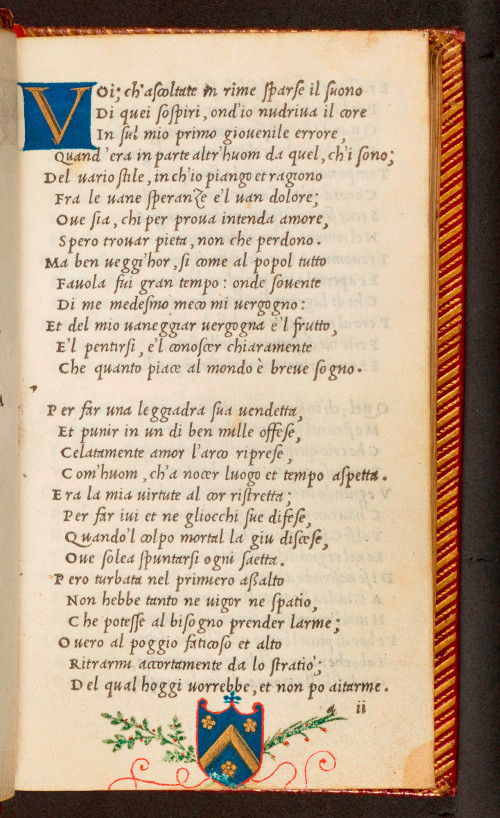
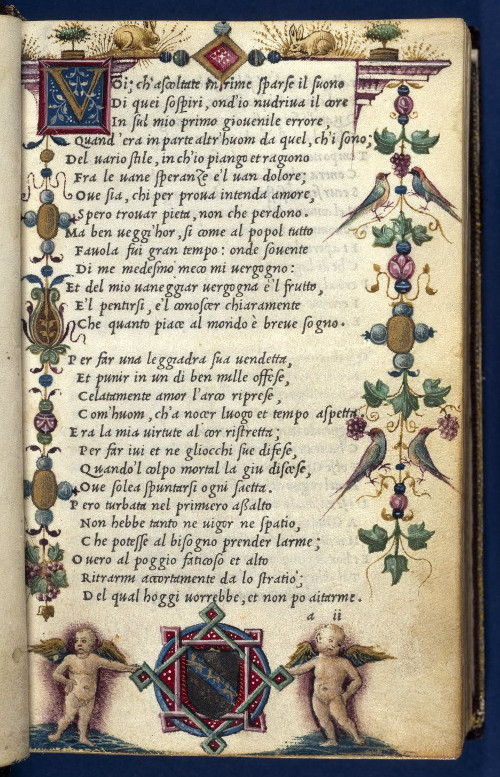
The systematic recataloguing to include binding and provenance information for all copies has uncovered the great depths of the collection and especially in relation to the existence of multiple copies of editions. This particular strength provides a major resource for the study of the distribution and impact of a single press, and offers a microcosm for the history of collecting and book collectors over five centuries. The project has opened up possibilities for new research, for example on collectors, bindings, extremely rare editions such as a group published by Paolo Manuzio for the Accademia Veneziana. It provided impetus for our collaboration with the University of York on the identification of animal species of parchment, based on the outstanding examples printed in parchment in the collection. We see this as an ongoing process, with many questions and puzzles still unanswered.
The expansion of the collection beyond the core gathered together by Spencer has provided the opportunity to highlight other collectors and drawn attention to the literary and educational cultures of nineteenth century Manchester and individual figures such as Richard Copley Christie, Bishop James Prince Lee, Joseph Thompson, David Lloyd Roberts and Walter Bullock.
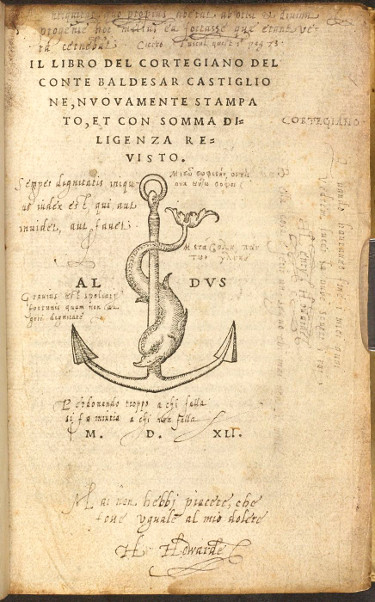
We will continue to add to the collection when we can, attempting to fill the gaps of missing editions and variant issues – a very difficult task, but mostly focussing on adding other interesting copies. This copy of the 1541 edition of Castiglione’s Courtier was purchased at the Kenneth Rapoport sale in October 2012. There are extensive annotations in this copy by Henry Howard, Earl of Northampton (1540-1614). From 1667 to 1873 it was in the library of the Royal Society and more recently the book was owned by the Oxford physician and bibliophile Bent Juel-Jensen.
Julianne Simpson
Rare Books and Maps Collections Manager,
Special Collections,
John Rylands Library
Explore Copac records for the Aldine collection at the University of Manchester
All images copyright the John Rylands Library and reproduced with the kind permission of the copyright holder.
Categories

